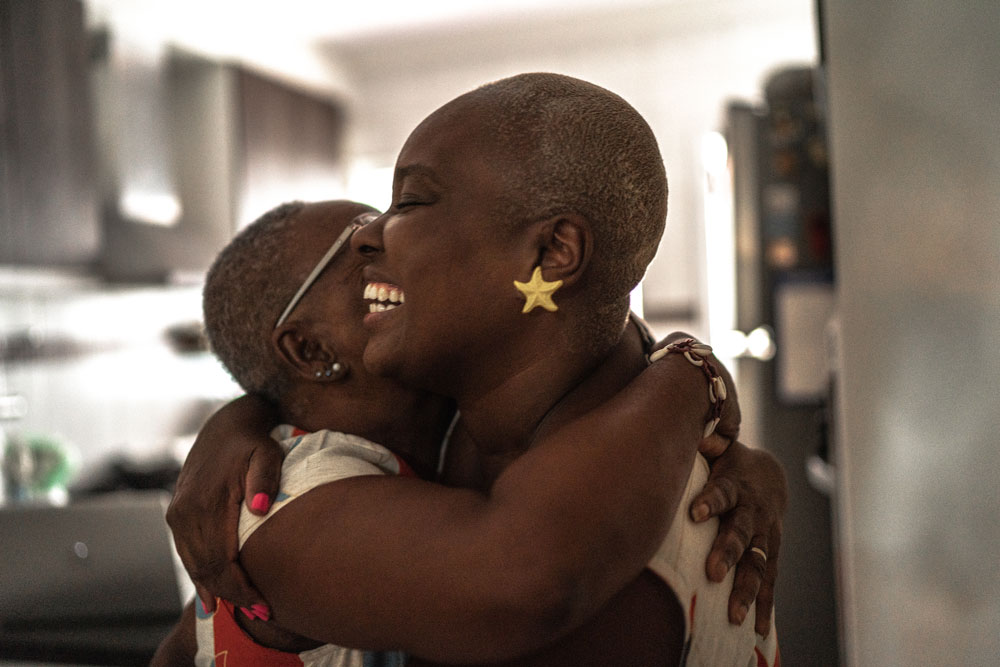Population diversity: important considerations in vaccine development
Introduction
An increased understanding of the immune response to vaccines is revealing how responses to vaccination individually differ and how antibody titer responses do not correlate with specific genetic or phenotypic responses, but rather from an integration of an array of factors1 including distribution of the target infection and its variants, prior exposure and vaccination, ethnicity, nutritional status, overall health of the population and social customs. Age also has a profound effect on vaccination response with infants, children and older adults requiring special consideration.
The impact of geographic variation
A multitude of regional factors can impact vaccine response, such as seasonal occurrence of infection, circulation of different subtypes of the infectious agent and the impact of other infections circulating in the community. If different subtypes are endemic in different parts of the world, this needs to be accounted for in the design of the clinical development program.
Regional considerations could include:
Stratifying for the region in a global study and performing sub-group analyses
- Undertaking individual studies in the regions of interest where differing strains are circulating
- Applying bridging strategies to extrapolate efficacy to different strains
- Conducting animal or in vitro studies could suffice to allow such extrapolation if adequately justified2
Prior exposure to the target infection is also important, as the vaccinated participant would likely be already immune, negating the value of the effectiveness trial in areas where the infection is prevalent. In some cases, the reverse may be true with immunological imprinting due to exposure to a related strain reducing the effectiveness of the vaccine, such as has been reported for influenza. In a study reported by Riese et al.1, non-responders to an influenza vaccination had received more frequent prior vaccinations compared to responders. This is observed to be in line with a meta-analysis that showed that repeated vaccination attenuates vaccine effectiveness. 3, 4 Vaccination history is therefore an important stratification consideration.1
In the case of Dengue fever, individuals who had not previously been infected by the virus were found to be at increased risk of severe disease following vaccination and therefore, vaccination is contra-indicated in such individuals (Dengvaxia® SMPC). This phenomenon known as Antibody Dependent Enhancement (ADE) has also been observed with other related Flaviviruses such as Zika and potentially with other viruses as well and occurs when sub-neutralizing antibodies facilitate cellular entry via fragment crystallizable gamma receptors (FcγR) on monocytes, dendritic cells, and macrophages.5
Different vaccination strategies may also be in use in different countries. In these instances, estimates of vaccine effectiveness obtained using different strategies may be required to inform on the optimal strategy to achieve rapid and efficient control of the disease.6
Nutritional factors
Nutritional factors are also important. For example, a meta-analysis of studies involving over 2,000 individuals found an association between vitamin D deficiency and sero-protection rates to influenza viruses.7 Supplements including vitamin B6, vitamin E, Zinc (Zn) and Selenium (Se) have been reported to provide enhanced immune protection in older people with amounts greater than can usually be achieved through diet alone being required to improve immune responses.8,9
Many other examples are cited in the literature. Selinium above normal specified levels has been associated with a better cure rate from COVID-19.10 A randomized controlled trial reported a better response to pneumococcal vaccination in people aged 65–85 years given ≥5 servings of fruits and vegetables per day compared with ≤2 servings.11 Improved responses in elderly subjects to vaccines have also been reported following supplementation with vitamins12 and to a polio vaccine with selenium supplementation.13 Whereas most of these studies are performed in the elderly it is expected that variation in nutritional status and in the case of vitamin D, exposure to sunlight will impact the results of vaccine trials.
The impact of microbiome
Recent reports suggest that the human microbiota may also modulate vaccine response14,15,16 and that this may be most important during early life when many vaccines are administered. A definitive relationship between microbiota and vaccination response is difficult to establish, not least because the factors that impact the gut microbiota may also directly impact immune response. Some studies have suggested an association of certain bacterial taxa with vaccine efficacy, these include bacteria of the genus Lactobacillus and Bifidobacterium. Microbiota variation among geographical regions may also affect the protective efficacy of vaccines and should be considered by vaccine developers and health organizations when scheduling vaccination programs.
The impact of ethnicity
Genetic effects, for example, arising from HLA type, also impact vaccination response. The ChAdOx1 nCov-19 vaccine efficacy trial in the United Kingdom, which enrolled 1,076 participants, indicated an association between major histocompatibility complex (MHC) class II and normalized antibody responses against the SARS-CoV-2 spike protein at 28 days post first vaccination. The strongest association was with HLA-DQB1*06 alleles and subjects expressing this allele were less likely to experience PCR-confirmed breakthrough infection during the ancestral SARS-CoV-2 virus and subsequent Alpha variant waves compared to non-carriers.
Apart from differences in HLA allotypes, differences in IgG1 allotypes have been reported that have been associated with response to vaccination. Currently, four human IgG1allotypes have been identified17 and their population distribution differs amongst ethnic groups e.g. between people with African, European and Asian ancestry18, 19 and interestingly different allotype distributions impacted response in a recent phase I HIV vaccine trial.20, 21
The inclusion of a representative ethnic population in vaccine trials is clearly important if there is a need to determine effectiveness that can be generalized across populations. An understanding of the relationship between response and genetic markers could in the future inform adjuvant and antigen selection and allow for a more targeted vaccine program.
Pediatrics vaccine development
Development generally takes place in a stepwise fashion from adults to children. However, for many global diseases, the pediatric population could face greater mortality or morbidity than the adult population because adults may already be immune. Therefore, it may be appropriate or necessary to start vaccine development in infants or children early.
Infectious diseases cause up to one-third of deaths in children under 5 years of age globally, and therefore infants should be vaccinated as soon as feasible to maximize protection during early life. Several specific factors need to be considered such as the maturity of the immune system, the blunting of a vaccination response by maternal antibodies, interaction with other more critically needed vaccines and the potential for exposure to the pathogen. Preterm infants have underdeveloped immune systems and require special consideration.22 T-cell responses in early life are limited due to differences favoring innate over adaptive immune responses, immunotolerance, and a high proportion of naïve and regulatory T-cells.
Consequently, neonatal immunizations often give weak antibody responses with reduced durability. The humoral response matures gradually with an IgM response initially predominating and IgG and IgA production remaining limited until 6 months of age. Due to the limitations of generating antibody responses in early life, neonates rely heavily on passive maternal antibody transfer. Maternal IgG persists in the infant circulation for months postnatally with breast milk supplementing with secretory IgA (sIgA) and some IgG postnatally. Despite the limited antibody responses in early life to many pathogens, term infants and young children can mount robust antibody responses to some pathogens such as for example RSV infections.18
Overall, when young infants are vaccinated, antibody levels fall to very low or undetectable levels 6 to 9 months after the first dose in most cases. Thus, except for a few exceptions such as BCG and HepB vaccines, most pediatric vaccines are administered after 2 months of age in a series of booster doses (rotavirus, DTaP, Hib, pneumococcal, polio, seasonal influenza, measles, mumps, and rubella, varicella vaccine, and hepatitis). The infant immune response can be improved by choice of adjuvant e.g., for an HIV vaccine, the oil-in-water emulsion adjuvant (MF59) yielded a better response in children than in adults given the same vaccine, despite similar responses between adults and infants when the alum-adjuvanted vaccine was given.22
One way that protection can be provided to infants during early life is by vaccinating the mother during pregnancy, which has been shown to be safe and effective. This approach is currently recommended against tetanus, pertussis and influenza in many areas of the world and has proven to be effective in preventing infection or moderating disease severity in children under 3 months of age. Vaccines for use in pregnancy or before pregnancy are being developed against cytomegalovirus and RSV.23, 24
Generally, in children, large trials are not feasible and if the course of the disease and the effects of the vaccine are sufficiently similar in adults and pediatric patients, the regulators may conclude that pediatric effectiveness can be extrapolated from adequate and well-controlled studies in adults, usually supplemented with other information obtained in pediatric subjects, such as immune response studies. Adequate safety information is also critical to support use in pediatrics.
Older adults
EMA guidelines advise of the importance of conducting dose-finding studies for vaccines to be used in older adults and that all age groups should be investigated (e.g., 65-74 years, 75-84 years and 85 years or more) to determine whether different doses and/or regimens are needed as age increases.2
Vaccine-non-responsiveness amongst older adults is well known and is the result of many factors including immune senescence. Higher frequencies of senescent T-cells commonly correlate with reduced vaccine efficacy in studies in which immune function in elderly and young adults was compared. Co-morbidities (e.g., diabetes mellitus, chronic kidney disease, liver disease, obesity/metabolic dysfunction, heart or lung diseases) can also affect responsiveness to vaccination.1
Immunological imprinting also appears to be a major driving force for reduced antibody responses against drifted or new viruses or vaccine antigens. In this regard, infections such as influenza encountered in childhood permanently shape responses, thereby affecting the outcome of vaccinations later in life. Consequently, all vaccinations later in life are indeed booster vaccinations and must be assessed accordingly.
EMA guidance notes the importance of studying the safety of vaccines in the elderly and any risks associated with underlying conditions and levels of frailty.2
Gender
Gender can also impact response to a vaccine and therefore it is important that clinical trials are conducted on a population balanced for gender. In general, females elicit a more robust antibody response but also suffer more adverse effects following vaccinations such as influenza, BCG, MMR, and yellow fever.25 This appears to be associated with the fact that testosterone dampens immune responses whereas, estradiol can stimulate antibody production. However, as estradiol levels decline with age, this difference is likely diminished in older adults.1
Health status
Health status particularly some types of immune deficiencies also impacts response to vaccines. EMA guidelines do no not recommend studying vaccine response in a broad immunodeficient population and suggest focusing on well-defined sub-populations with certain immune deficiencies that have been selected based on their likelihood to affect the immune response to a specific vaccine. Unless there is a well-established immune-correlate of protection that can be applied to the data, the usual aim of such trials will be to identify the dose that achieves comparable immune responses to those observed in immunocompetent subjects.
Apart from immunodeficiencies, other health conditions may also impact response and level of protection imparted by vaccination and general health status needs consideration as part of any vaccine development and subsequent vaccination strategy.
Expanding understanding of the immune response
Our expanding understanding of the immune response to vaccines based on immunologic, genetic, and transcriptional data facilitates a better understanding of vaccine effectiveness. Riese et al, studied subjects ≥ 65 years of age who were administered the adjuvanted trivalent influenza vaccine, Fluad. By application of a combination of serology, multi-parametric flow cytometry, multiplex and transcriptome analysis they were able to identify differences in T cell responses between responders and non-responders with the former having a higher proportion of T follicular helper cells which facilitated an immune response and the latter, T regulatory cells which suppressed an immune response. However, an scRNA (small conditional RNA probe) analyses indicated, responses differ with each subject displaying an individual functional fingerprint. This indicates that the magnitude of the antibody titer response does not correlate with any specific genetic or phenotypic response, but rather “from the integration of a complex, pleomorphic and individual fingerprint”.1
Conclusion
Development of vaccines cannot occur in isolation of an understanding of the target population and the variability of its effect across the population. It is therefore important to consider that both the effectiveness and adverse effects of vaccines may differ across populations, with age playing a dominant role but also nutrition, health, gender, genetics and environment. Thus, the development of vaccines needs to carefully address the potential for differences in response in different population groups and geographies.
References
1) Riese P, Trittel S, Akmato, MK, et al. Distinct immunological and molecular signatures underpinning influenza vaccine responsiveness in the elderly. Nat Commu. 2022;13:6894. doi:https://doi.org/10.1038/s41467-022-34487-z
2) European Medicines Agency Guideline on clinical evaluation of vaccines (europa.eu). Doc. Ref. EMEA/CHMP/VWP/164653/05 Rev. 1. Published 16 January 2023. Available at: https://www.ema.europa.eu/en/documents/scientific-guideline/guideline-clinical-evaluation-vaccines-revision-1_en.pdf
3) Lee J, Paparoditis P, Horton AP. Persistent antibody clonotypes dominate the serum response to influenza over multiple years and repeated vaccinations. Cell host & Microbe 13 March 2019;25:367–376. doi:https://doi.org/10.1016/j.chom.2019.01.010
4) Jones-Gray E, Robinson EJ, Kucharski AJ, et al. Does repeated influenza vaccination attenuate effectiveness? A systematic review and meta-analysis. Lancet Respir. Med. 2022;11:27-42. doi:https://doi.org/10.1016/S2213-2600(22)00266-1.
5) Dai, L., Xu, K., Li, J. et al. Protective Zika vaccines engineered to eliminate enhancement of dengue infection via immunodominance switch. Nat Immunol 22, 958–968 (2021). https://doi.org/10.1038/s41590-021-00966-6 Protective Zika vaccines engineered to eliminate enhancement of dengue infection via immunodominance switch | Nature Immunology
6) Rayman MP, Calder PC. An effective immune response requires adequate nutrition including micronutrients such as vitamins B6, C, as well as elements such as Zn, Se and Fe (Optimising COVID-19 vaccine efficacy by ensuring nutritional adequacy. British Journal of Nutrition . 28 December 2021;126 (12):1919–1920. doi:https://doi.org/10.1017/S0007114521000386
7) Lee M-D, Lin C-H, Lei, W-T, et al. Does vitamin D deficiency affect the immunogenic responses to influenza vaccination? A systematic review and meta-analysis. Nutrients, 2018;10(4):409. doi:https://doi.org/10.3390/nu10040409
8) Gombart AF, Pierre A, Maggini S. A review of micronutrients and the immune system – working in harmony to reduce the risk of infection. Nutrients 2020;12 (1):236. doi:https://doi.org/10.3390/nu12010236
9) Calder PC. Nutrition, immunity and COVID-19. BMJ Nutrition, Prevention & Health 2020;3:e000085. doi:0.1136/ bmjnph-2020-000085.
10) Zhang J, Taylor EW, Bennett K, et al. Association between regional selenium status and reported outcome of COVID-19 cases in China. Am J Clin Nutr. 2020;11: 1297–129. doi:https://doi.org/10.1093/ajcn/nqaa095
11) Gibson A, Edgar JD, Neville CE, et al. Effect of fruit and vegetable consumption on immune function in older people: a randomized controlled trial. Am J Clin Nutr. 2012, 6, 1429–1436. doi: https://doi.org/10.3945/ajcn.112.039057
12) Meydani SN, Meydani M, Blumberg JB, et al. Vitamin E supplementation and in vivo immune response in healthy elderly subjects. JAMA 1997;277(17):1380–1386. doi:10.1001/jama.1997.03540410058031.
13) Broome CS, McArdle F, Kyle JAM, et al. An increase in selenium intake improves immune function and poliovirus handling in adults with marginal selenium status. Am J Clin Nutr. 2004; 80:154–162. doi:https://doi.org/10.1093/ajcn/80.1.154
14) Impact of the host microbiome on vaccine responsiveness: Lessons Learned and Future Perspective Stefanetti G , Kasper DL. Biochemistry 2022, 61, 24, 2849–2855. doi:https://doi.org/10.1021/acs.biochem.2c00309
15) Lynn, D.J., Benson, S.C., Lynn, M.A. et al. Modulation of immune responses to vaccination by the microbiota: implications and potential mechanisms. Nat Rev Immunol 2022;22:33–46 https://doi.org/10.1038/s41577-021-00554-76) Figures
16) JorCarding SR, Hall L. The early life biome and vaccine efficacy. The Lancet - https://www.thelancet.com/journals/lanmic/article/PIIS2666-5247(22)00185-9/fulltext
17) Vidarsson G, Dekkers G, Rispens T. IgG subclasses and allotypes: from structure to effector functions. Front Immunol 20 October 2014 Sec. Vaccines and Molecular Therapeutics:5 doi:10.3389/FIMMU.2014.00520
18) Johnson WE, Kohn PH, Steinberg AG. Population genetics of the human allotypes Gm, Inv, and A2m: An Analytical Review. Clin Immunol Immunopathol. 1977;7:97–113. doi:10.1016/0090-1229(77)90034-4
19) Jefferis R, Lefranc M-P. Human immunoglobulin allotypes. mAbs 2009;1:332–8. doi:10.4161/MABS.1.4.9122.
20) Kratochvil S, McKay PF, Kopycinski JT, Bishop C, Hayes PJ, Muir L, et al. A Phase 1 Human Immunodeficiency Virus Vaccine Trial for Cross-Profiling the Kinetics of Serum and Mucosal Antibody Responses to CN54gp140 Modulated by Two Homologous Prime-Boost Vaccine Regimens. Front Immunol. 2017;8:595. doi:10.3389/fimmu.2017.00595
21) Kratochvil S, McKay PF, Chung AW, Kent SJ, Gilmour J, Shattock RJ. Immunoglobulin G1 allotype influences antibody subclass distribution in response to HIV Gp140 vaccination. Front Immunol. 2017;8:1883. doi:10.3389/fimmu.2017.01883
22) Semmes EC, Chen JL, Goswami R, et al. Understanding early-life adaptive immunity to guide interventions for pediatric health. Front. Immunol. 21 January 2021; Sec. Immunological Memory 11. doi: https://doi.org/10.3389/fimmu.2020.595297
23) Zimmermann P, Jones, CE. Factors that influence infant immunity and vaccine responses. The Pediatric Infectious Disease Journal May 2021:40(5S):S40-S46 doi:10.1097/INF.0000000000002773
24) Cinicola B, Conti MG, Terrin G, et al. The protective role of maternal immunization in early life. Front. Pediatr. 28 April 2021 Sec. Pediatric Immunology:9. doi: https://doi.org/10.3389/fped.2021.638871
25) Klein SL, Marriott I, Fish EN. Sex-based differences in immune function and responses to vaccination. Trans. R. Soc. Trop. Med. Hyg. 2015;109:9–15.







